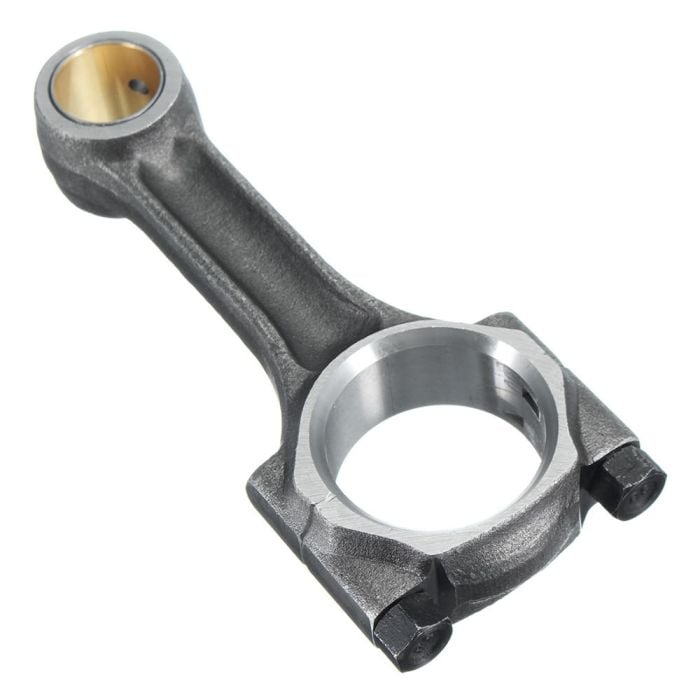Select a cost-effective clp engine for industrial applications.
Select a cost-effective clp engine for industrial applications.
Blog Article
Just How a Clp Engine Can Enhance Efficiency in Different Industries
The introduction of CLP engines notes a considerable shift in functional performance across numerous industries, driven by their capacity to optimize gas consumption and lessen downtime. Industries such as production and logistics stand to obtain significantly from their robust layout and constant power result, which guarantee to streamline procedures and boost efficiency. As organizations progressively focus on sustainability alongside effectiveness, the duty of CLP engines becomes a lot more essential. What remains to be seen is exactly how these advancements will shape the future landscape of commercial procedures and their effect on more comprehensive economic patterns (clp engine).
Summary of CLP Engines
CLP engines, or Constant Liquid Propellant engines, represent a significant development in propulsion technology, specifically for room applications. These engines use a constant feed system that permits the continual expulsion of propellant, bring about improved performance and performance compared to traditional strong or hybrid propulsion systems. By maintaining a constant circulation of fluid propellant, CLP engines can achieve much more specific thrust control, which is vital for steering spacecraft in numerous objective scenarios.
The style of CLP engines integrates innovative materials and innovative gas management systems. clp engine. This causes decreased weight and raised dependability, important factors for long-duration room goals. Moreover, the continuous procedure reduces the threat of combustion instability, an usual difficulty in traditional rocket engines.

Benefits in Production
The production of Constant Fluid Propellant (CLP) engines provides a number of significant advantages that enhance both efficiency and cost-effectiveness. One of the key advantages is the structured manufacturing procedure, which minimizes the complexity related to traditional propulsion systems. By utilizing fluid propellant, makers can accomplish higher accuracy in engine efficiency, causing enhanced energy result and lowered waste.
Furthermore, CLP engines help with a higher level of modularity, permitting much easier integration right into numerous manufacturing lines. This flexibility can considerably decrease preparations and enhance total functional versatility. The use of CLP technology additionally has a tendency to minimize the demand for substantial maintenance as a result of fewer moving components, which equates right into minimized downtime and operational expenses.

Applications in Logistics
Leveraging Continuous Get the facts Liquid Propellant (CLP) engines in logistics provides considerable advantages in operational effectiveness and dependability. These engines supply a durable service for various transportation needs, enabling the seamless movement of goods across large distances. The intrinsic layout of CLP engines permits regular power outcome, which converts into smoother and much more predictable transportation schedules.
Among the vital applications of CLP engines in logistics remains in sturdy products transportation, where they can drive both ground and aerial cars. Their ability to maintain high performance under differing load problems ensures that shipment timelines are satisfied, therefore boosting client complete satisfaction. Furthermore, CLP engines can be incorporated into automated logistics systems, helping with real-time monitoring and maximizing route preparation.
In addition, the sturdiness of CLP engines lowers upkeep downtime, allowing logistics companies to maximize their operational abilities. This is specifically valuable in warehousing operations, where performance in handling and delivering items is important. As logistics remains to evolve, the integration of CLP engines stands for a forward-thinking strategy that not only enhances efficiency yet also sustains the industry's growing needs for integrity and speed.
Influence On Energy Efficiency
How do Constant Fluid Propellant (CLP) engines boost energy efficiency in transportation? CLP engines make use of a constant flow of liquid fuel, enhancing combustion procedures and keeping a steady thrust output. This design minimizes power losses connected with traditional burning engines, where gas distribution can differ and result in ineffectiveness.
The continuous operation of CLP engines permits for an extra efficient thermal cycle, resulting in higher certain my blog impulse contrasted to conventional engines. clp engine. This equates to lowered fuel usage for the very same amount of job done, dramatically lowering operational prices across different transportation markets, consisting of air travel and maritime industries
In addition, the ability of CLP engines to keep optimal performance under differing tons problems decreases the demand for regular velocity and deceleration, better improving fuel effectiveness. Clicking Here Improved energy efficiency not just contributes to cost financial savings however also results in reduce greenhouse gas emissions, aligning with international sustainability goals.
Future Trends and Innovations
Emerging advancements in Continuous Liquid Propellant (CLP) engine technology assurance to reinvent the landscape of transport performance and sustainability. As industries pivot toward greener choices, CLP engines stand at the leading edge, integrating ingenious products and style techniques that improve efficiency while minimizing ecological influence.
Among the most appealing fads is the adoption of hybrid systems that combine CLP engines with eco-friendly power sources. This harmony can maximize fuel intake and decrease emissions, aligning with international sustainability objectives. In addition, innovations in computational liquid dynamics (CFD) are facilitating the design of even more aerodynamically effective engines, resulting in reduced drag and enhanced fuel performance.
Additionally, the growth of wise surveillance systems is established to enhance functional efficiencies. These systems utilize data analytics and IoT modern technology to maximize engine performance in real-time, making sure that the engines operate within their most reliable specifications.
As research remains to discover different propellant formulations-- such as biofuels and artificial gas-- the future of CLP engines looks promising. By using these developments, sectors can not only boost their efficiency however additionally contribute substantially to a cleaner, more lasting future in transport.
Final Thought
In final thought, CLP engines stand for a considerable advancement in effectiveness across several markets. The assimilation of innovative products and less moving components lessens upkeep requirements, while positioning with sustainability goals settings CLP engines as a crucial technology for the future.
Report this page